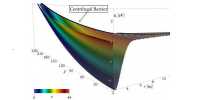A zeptosecond is equal to one billionth of a second, and the new measure is three times smaller than the previous record set in 2016. Researchers at Goth University have yet to measure the shortest interval of time: 247 zeptoseconds. As published in Science, the research team used molecules made up of two hydrogens, the simplest and most abundant atoms in the universe. They then measure how long it takes for the photons to pass through the molecule and it is found in 247 zeptoseconds.
To give you a clearer idea, the difference between this time and a single second is like a few centimeters or an inch and a light-year of ten to ten years. Or pressing the horn of a car after a long traffic light it is almost double-double to take someone behind you.
First, those electrons behave like light on both waves and particles. Second, it is possible to kick an electron away from its atom by lighting light of certain energy. In this case, they used strong X-rays. The measurement by some oddities in the quantum world is as follows.
A hydrogen molecule has a nucleus and two electrons. X-ray photons first emit one electron and then the other. Each hydrogen atom has a single electron in a shell that surrounds its atomic nucleus. Like two waves in a pond, the electrons form an interference pattern with crests and valleys. That particular pattern tells the team how fast the photon was moving through the molecule.
“And it depends on how far the two atoms in the molecule were from the point of view of light. It was up to 247 zero seconds.” “Since we knew the spatial position of the hydrogen molecule, we used it to accurately calculate the interference of two-electron waves when the photon reaches the first and the second reaches the hydrogen atom,” lead author Sven Grundmann said in a statement.
The orientation of hydrogen molecules and detection of the first escaped electrons was made possible by the COLTRIMS reaction microscope, a technology that helped team leader Professor Reinhard Dörner develops.
“Time delays occur because the information within molecules spreads only at the speed of light. With this discovery, we have expanded our COLTRIMS technology to another application.” “We have observed for the first time that the electron shell in a molecule does not react to light everywhere at the same time,” Darner explained.















